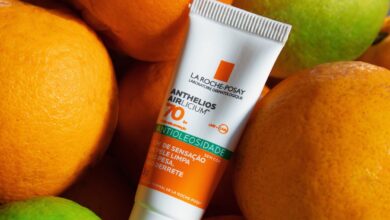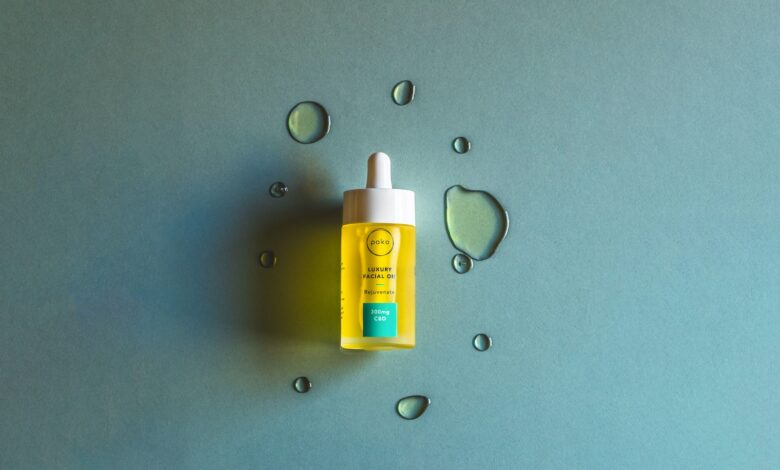
In the fast-paced world of skincare, facial oils have emerged as a popular and effective way to nourish and enhance the radiance of your skin. This comprehensive guide by stylish.ae aims to provide you with valuable insights into the world of facial oils, helping you understand their benefits, types, and how to incorporate them into your daily skincare routine. Whether you have dry, oily, or combination skin, this guide will equip you with the knowledge and confidence to select the right facial oil for your specific needs, ultimately resulting in a healthier and more radiant complexion.
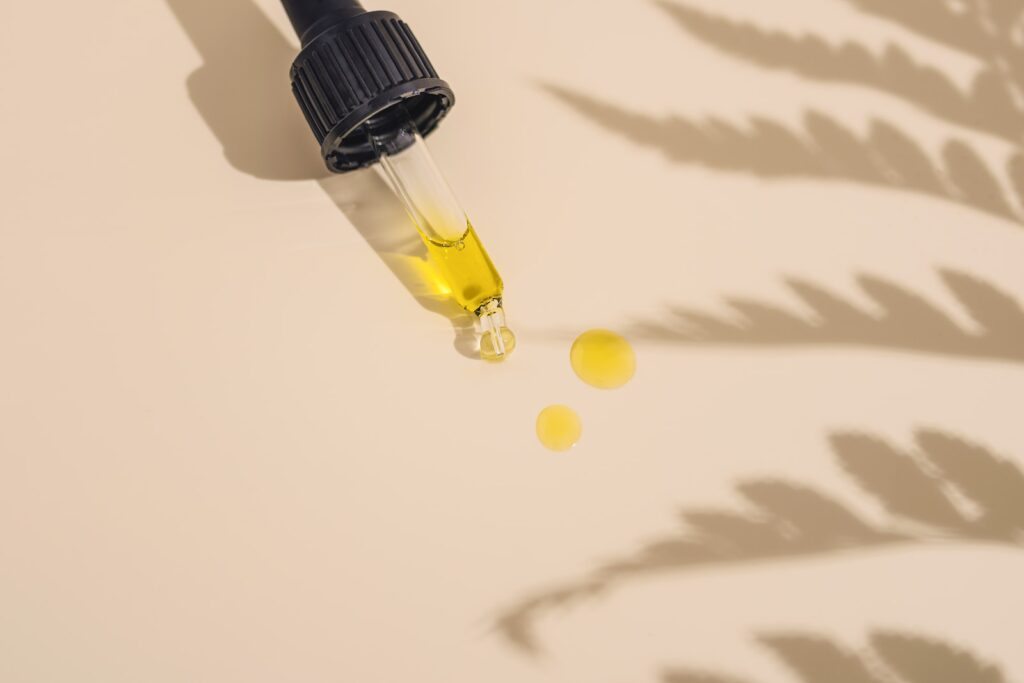
What are facial oils?
Definition of facial oils
Facial oils are skincare products that are formulated specifically for application on the face. These oils are designed to provide nourishment, hydration, and a radiant glow to the skin. Unlike traditional moisturizers, facial oils contain concentrated botanical extracts and essential fatty acids that penetrate deeply into the skin, delivering a host of benefits.
Different types of facial oils
There are various types of facial oils available in the market, each with unique properties and benefits. Some common types include:
- Rosehip oil: Known for its anti-aging properties, rosehip oil is rich in antioxidants and vitamins A and C. It helps in reducing the appearance of scars, wrinkles, and fine lines.
- Jojoba oil: Jojoba oil closely resembles the natural sebum produced by our skin, making it an effective moisturizer for all skin types. It soothes dryness, balances oil production, and promotes a clearer complexion.
- Argan oil: Derived from the kernels of the Moroccan argan tree, argan oil is rich in vitamin E, essential fatty acids, and antioxidants. It deeply nourishes the skin, boosts collagen production, and helps to minimize the signs of aging.
- Marula oil: Extracted from the fruit of the marula tree, marula oil is lightweight and easily absorbed by the skin. It is packed with antioxidants, omega fatty acids, and vitamins, providing intense hydration, improving elasticity, and reducing inflammation.
- Grapeseed oil: As the name suggests, grapeseed oil is extracted from the seeds of grapes. It is non-comedogenic and suitable for all skin types. It is loaded with antioxidants, linoleic acid, and vitamin E, making it effective in moisturizing, tightening pores, and reducing acne.

Benefits of using facial oils
Using facial oils as part of your skincare routine offers a multitude of benefits for your skin. Some key advantages include:
- Hydration and moisturization: Facial oils are excellent at providing deep hydration to the skin, locking in moisture and preventing water loss. They create a protective barrier on the skin’s surface, helping to keep the skin plump, smooth, and moisturized.
- Nutrition and nourishment: Facial oils are packed with essential nutrients, antioxidants, and vitamins that nourish the skin. They help to replenish and revitalize the skin, providing it with the necessary building blocks for a healthy and radiant complexion.
- Protection and repair: Facial oils contain potent antioxidants that protect the skin from environmental damage, such as pollution and UV rays. They also help in repairing the skin’s natural barrier, which can be compromised by factors like harsh weather conditions and excessive use of exfoliants.
- Radiance and glow: Regular use of facial oils can significantly enhance the skin’s radiance and glow. These oils typically contain ingredients that promote cellular regeneration, improve skin tone and texture, and impart a healthy, luminous sheen.

Why should you use facial oils?
Hydration and moisturization
Facial oils are exceptional when it comes to providing hydration and moisturization to the skin. These oils have the ability to penetrate deep into the skin layers, reaching the underlying tissues and cells. Unlike traditional moisturizers that may only hydrate the skin surface temporarily, facial oils seal in moisture and prevent water loss, keeping your skin hydrated for longer periods. This makes facial oils especially beneficial for individuals with dry or dehydrated skin.
Nutrition and nourishment
The natural botanical extracts and essential fatty acids present in facial oils provide a wealth of nutrition and nourishment to the skin. These oils are enriched with vitamins, minerals, and antioxidants that work together to rejuvenate and revitalize the skin. Regular use of facial oils can help to improve skin texture, boost collagen production, reduce the appearance of fine lines and wrinkles, and promote an overall healthier complexion.
Protection and repair
Facial oils are not just hydrating and nourishing; they also offer protection and repair benefits to the skin. The antioxidants present in these oils neutralize free radicals, which are damaging molecules that can accelerate the aging process and lead to various skin issues. By combating the harmful effects of environmental factors like pollution and UV rays, facial oils help to prevent premature aging and maintain the skin’s barrier function. Additionally, these oils aid in repairing any existing damage to the skin, promoting a faster healing process and reducing inflammation.
Radiance and glow
One of the most sought-after benefits of incorporating facial oils into your skincare routine is the radiant and glowing complexion they can provide. Facial oils enhance the skin’s natural luminosity by improving circulation, promoting cellular turnover, and minimizing dullness. They can give your skin a healthy, youthful glow that is often difficult to achieve with other products.

How to choose the right facial oil?
Skin type and concerns
The first step in choosing the right facial oil is to consider your skin type and specific concerns. Different oils have different properties and are better suited for certain skin types. For example, individuals with dry skin may benefit from heavier oils like rosehip or marula oil, while those with oily or acne-prone skin may prefer lighter oils such as jojoba or grapeseed oil. If you have specific skin concerns like aging, inflammation, or hyperpigmentation, you can choose oils that target those issues specifically.
Ingredients to look for
When selecting a facial oil, it is essential to carefully read the ingredient list. Look for oils that contain high-quality, natural ingredients and avoid oils that contain synthetic fragrances or harsh chemicals. Some beneficial ingredients to look for in facial oils include omega fatty acids, vitamin E, antioxidants (such as green tea extract or rosemary extract), and plant extracts like chamomile or lavender.
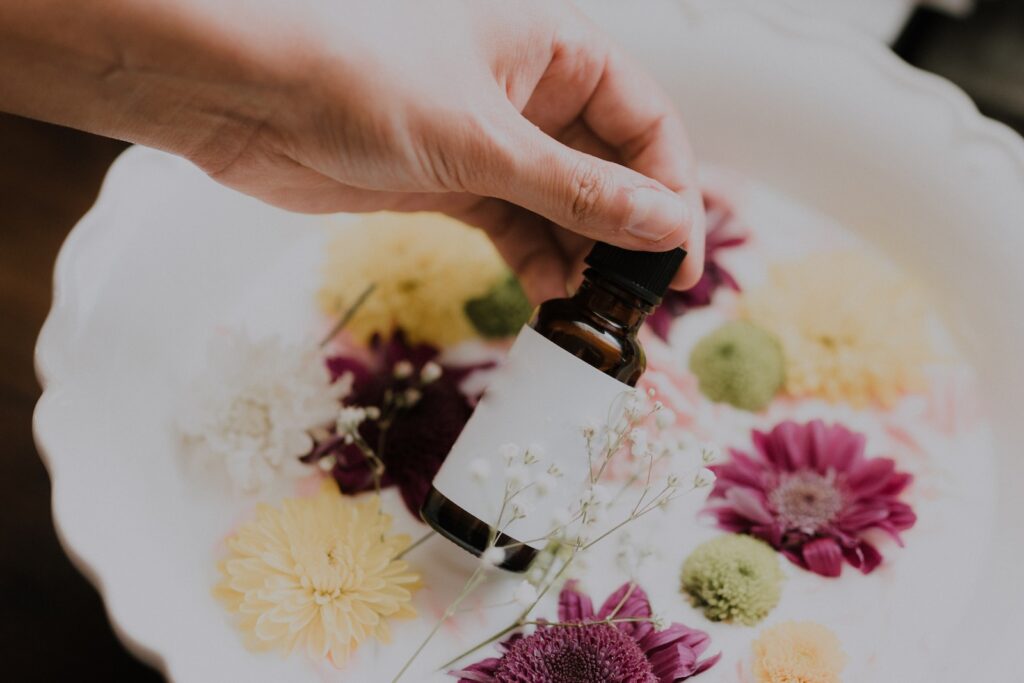
Texture and absorption
Consider the texture and absorption rate of the facial oil. Some oils may feel heavier on the skin, while others are lightweight and easily absorbed. If you have oily skin or prefer a quick-absorbing oil, opt for lighter oils that won’t leave a greasy residue. On the other hand, if you have dry skin or prefer a richer texture, go for oils with a thicker consistency.
Scent and sensory experience
The scent and sensory experience of a facial oil can greatly enhance your skincare routine. Some facial oils have a natural fragrance derived from the botanical extracts they contain, while others may be unscented. It’s essential to choose an oil that you enjoy applying to your skin. Consider your personal preferences and choose an oil with a scent that you find pleasing or opt for an unscented variety if you are sensitive to fragrances.
Popular facial oils for nourishment and radiance
Rosehip oil
Rosehip oil is a popular facial oil known for its numerous benefits. It is rich in essential fatty acids, vitamins A and C, and antioxidants. Rosehip oil is particularly effective in reducing the appearance of scars, wrinkles, and fine lines. It also helps in brightening the complexion and improving skin elasticity.
Jojoba oil
Jojoba oil is a versatile facial oil suitable for all skin types. It closely mimics the structure of the skin’s natural sebum and is easily absorbed by the skin. Jojoba oil is known for its moisturizing properties and helps balance the skin’s oil production. It soothes dryness, reduces inflammation, and promotes a clearer, healthier complexion.
Argan oil
Argan oil, also known as “liquid gold,” is derived from the kernels of the Moroccan argan tree. It is packed with vitamin E, essential fatty acids, and antioxidants. Argan oil deeply nourishes the skin, boosts collagen production, and reduces the signs of aging. It restores radiance, improves skin texture, and helps in repairing damage caused by free radicals.
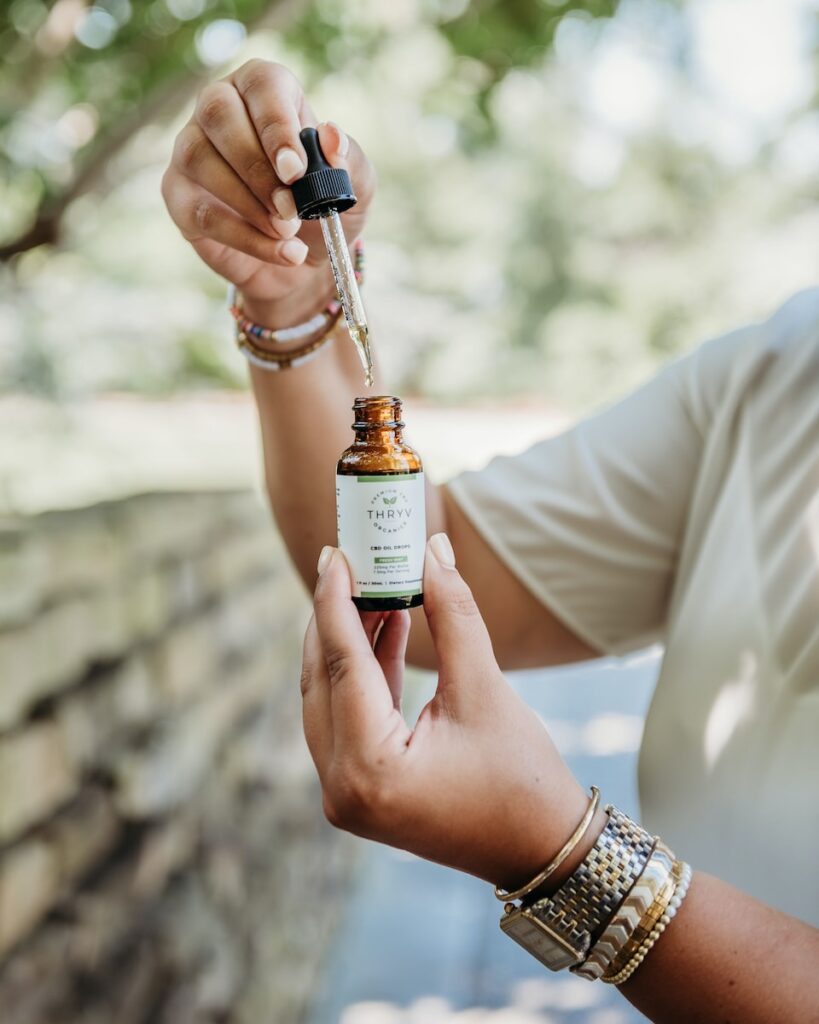
Marula oil
Marula oil is a lightweight facial oil that is rapidly absorbed by the skin, making it suitable for all skin types. It is rich in antioxidants, omega fatty acids, and vitamins. Marula oil provides intense hydration, improves elasticity, and reduces inflammation. It also helps in minimizing the appearance of fine lines and wrinkles, giving the skin a more youthful and radiant appearance.
Grapeseed oil
Grapeseed oil is a lightweight and non-comedogenic facial oil, making it ideal for all skin types, especially acne-prone skin. It is abundant in antioxidants, linoleic acid, and vitamin E. Grapeseed oil moisturizes the skin without clogging pores, tightens the skin, and reduces the occurrence of breakouts. It also helps in fading scars and restoring the skin’s natural glow.

Application techniques for facial oils
Preparation and cleansing
Before applying facial oil, it is important to thoroughly cleanse your face to ensure the skin is free from dirt, makeup, and impurities. This allows the facial oil to penetrate the skin effectively. Use a gentle cleanser suitable for your skin type, and pat your face dry with a clean towel.
Massage and acupressure
Applying facial oil through gentle massage and acupressure techniques can enhance its absorption and effectiveness. Use clean fingertips or a facial massage tool to massage the oil into your skin, focusing on areas of concern or tension. This massage technique helps to stimulate blood circulation and oxygen flow to the skin, promoting a healthy and radiant complexion.
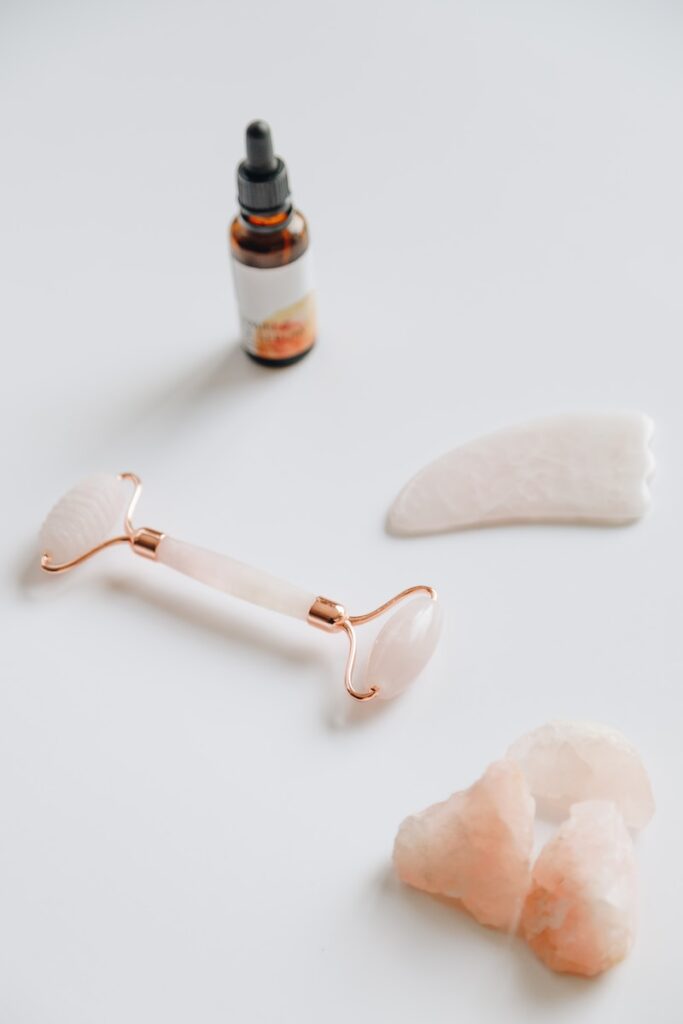
Layering with other skincare products
Facial oils can be layered with other skincare products, such as serums, moisturizers, or sunscreen. Apply the facial oil as the last step in your skincare routine, after any water-based products. The oil will lock in the moisture and act as a protective barrier, sealing in the benefits of the previous products and providing additional nourishment and hydration.
Dos and don’ts
When using facial oils, it is important to keep a few dos and don’ts in mind:
- Do start with a small amount of facial oil and gradually increase if needed. A little goes a long way, and using too much can leave your skin feeling greasy.
- Do apply facial oil to damp skin for better absorption. The moisture on your skin helps to seal in the oil and promotes deeper penetration into the skin layers.
- Don’t use facial oils directly on acne-prone or active breakouts without consulting a dermatologist. Some oils may exacerbate acne or cause clogged pores.
- Don’t forget to do a patch test before using a new facial oil. Apply a small amount to a small area of skin and observe for any adverse reactions or allergies.
Common misconceptions about facial oils
Facial oils cause breakouts
One common misconception about facial oils is that they cause breakouts. While it is true that some oils can clog pores and lead to acne, not all facial oils have this effect. In fact, many facial oils are non-comedogenic, meaning they don’t clog pores. It is important to choose the right facial oil that suits your skin type and is non-comedogenic to avoid breakouts.
Facial oils make skin greasy
Another misconception is that facial oils make the skin greasy. When applied correctly, facial oils should not leave a greasy residue on the skin. It is important to use a small amount of oil and massage it into the skin until fully absorbed. Oils with a lightweight texture or fast-absorbing properties are less likely to leave a greasy feel.
Facial oils are only for dry skin
Contrary to popular belief, facial oils are not exclusive to dry skin types. There are facial oils available for all skin types, including oily and combination skin. Oily skin can still benefit from facial oils as they can regulate excess sebum production and balance the skin’s natural oils. It is important to choose oils that are lightweight and non-comedogenic for oily or combination skin.
Facial oils replace moisturizers
Facial oils are not meant to replace moisturizers but rather complement them. While facial oils provide hydration and nourishment, they do not contain the same ingredients and properties as traditional moisturizers. Moisturizers have specific formulations that target different skin concerns, and they often contain a combination of water, humectants, and emollients. Facial oils can be used in addition to a moisturizer to provide an extra layer of hydration and lock in moisture.

Tips for incorporating facial oils into your skincare routine
Start with a patch test
Before incorporating a new facial oil into your skincare routine, it is always recommended to do a patch test. Apply a small amount of the oil to a small area of skin, such as the inside of your wrist, and observe for any adverse reactions or allergies. If no reactions occur after 24 hours, it is safe to proceed with using the oil on your face.
Choose the right time of day
You can use facial oils in both your morning and evening skincare routines, depending on your preference. In the morning, apply the facial oil after cleansing and toning but before applying sunscreen or makeup. In the evening, use the facial oil as the last step in your skincare routine to seal in moisture and promote overnight repair.
Adjust the amount and frequency
Start by using a small amount of facial oil and gradually increase if needed. A few drops are usually sufficient to cover the face. It is better to apply a lighter layer and add more if needed, rather than using too much and experiencing a greasy feeling. Experiment with the frequency of application and adjust according to your skin’s needs. Some individuals may prefer using facial oil daily, while others may find every other day or a few times a week more suitable.
Experiment with layering
Facial oils can be layered with other skincare products to enhance their benefits. Try layering the oil after serums or lightweight moisturizers to seal in the hydration and provide a protective barrier. You can also mix a few drops of facial oil with your foundation or tinted moisturizer for a dewy, radiant finish. Experiment with different layering techniques to find the combination that works best for your skin.
Additional skincare tips for maximum nourishment and radiance
Healthy lifestyle choices
In addition to incorporating facial oils into your skincare routine, adopting healthy lifestyle choices can maximize the nourishment and radiance of your skin. This includes maintaining a balanced diet, staying hydrated, getting enough sleep, managing stress levels, and avoiding excessive alcohol and smoking. These factors play a vital role in supporting overall skin health and can enhance the effectiveness of facial oils.
Proper cleansing and exfoliation
Proper cleansing and exfoliation are essential steps in any skincare routine. Cleansing removes dirt, makeup, and impurities, allowing the facial oil to penetrate the skin effectively. Exfoliation helps to remove dead skin cells and promote smoother, more radiant skin. It is important to choose gentle cleansers and exfoliators suitable for your skin type to avoid causing any irritation or damage.

Sun protection
Sun protection is vital for maintaining healthy and youthful-looking skin. Even when using facial oils, it is important to apply sunscreen to protect the skin from harmful UV rays. Look for a broad-spectrum sunscreen with at least SPF 30 and apply it as the last step in your skincare routine before makeup or exposure to the sun. Remember to reapply sunscreen every few hours, especially if you are spending an extended period outdoors.
Hydration from within
While facial oils provide external hydration, it is equally important to hydrate your skin from within. Drink an adequate amount of water daily to keep your skin hydrated and promote a healthy complexion. Eating water-rich foods, such as fruits and vegetables, can also contribute to overall skin hydration.

DIY facial oil blends for personalized nourishment and radiance
Choosing carrier oils
Creating your own facial oil blends allows you to customize the formula to suit your specific skin concerns. Start by selecting a carrier oil as the base of your blend. Popular carrier oils include jojoba oil, sweet almond oil, grapeseed oil, and rosehip oil. Each carrier oil has its own unique properties and benefits, so choose one that aligns with your skin type and concerns.
Adding essential oils
Once you have chosen a carrier oil, you can enhance its benefits by adding a few drops of essential oils. Essential oils are highly concentrated plant extracts that offer various therapeutic properties for the skin. However, it is important to note that essential oils must be used in small quantities and diluted properly to avoid irritating the skin. Some essential oils that are often used in facial oil blends include lavender, rose, tea tree, and frankincense.
Storage and shelf life
Proper storage is essential to ensure the longevity and effectiveness of your DIY facial oil blends. Store them in dark, glass bottles to protect them from light and air exposure. Keep the bottles tightly sealed and store them in a cool, dry place away from direct sunlight. Facial oil blends can typically last up to 6-12 months, depending on the carrier oil and essential oils used. However, it is best to use them within three months to ensure freshness and potency.
Customizing for specific skin concerns
The beauty of DIY facial oil blends is the ability to customize them for specific skin concerns. You can cater the ingredients to address issues such as dryness, acne, aging, or dullness. For example, if you have dry skin, you may consider incorporating nourishing oils like avocado oil or evening primrose oil into your blend. If you are targeting acne-prone skin, tea tree oil or lavender oil can have purifying and calming effects. Research different carrier oils and essential oils to find the ones best suited to your skin needs.
Conclusion
Incorporating facial oils into your skincare routine can provide immense nourishment and radiance to your skin. These oils offer hydration, nourishment, protection, and a natural glow, making them a valuable addition to any skincare regimen. By understanding your skin type, choosing the right facial oil, and following proper application techniques, you can enhance the benefits and maximize the results. Remember to embrace healthy lifestyle choices, practice proper cleansing and sun protection, and personalize your skincare routine to achieve your desired results. With the right facial oil and a consistent skincare routine, you can discover your perfect facial oil and enjoy a healthy, radiant complexion.



